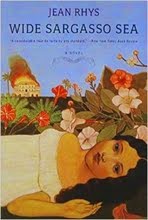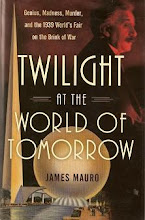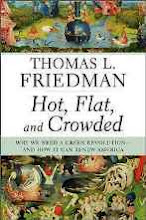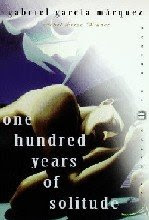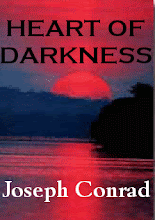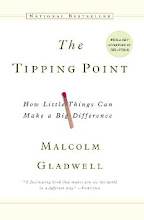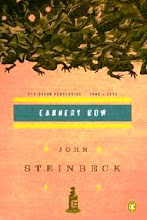
Torrents pour from the sky like a warm soothing embrace as I stand alone in silent reverence for what’s before me. At times the soft fog and falling rain obscure my view and turns the landscape into a surreal dream conjured up from a science fiction novel. The rich sweet organic air is so humid that I can imagine myself breathing underwater as a feeling of contradiction between sheltered security and wilderness vastness is sweeping over me. Sounds of raindrops hitting leaves as they migrate to the swollen earth roar in my ears like a million small drums beating out an ancient tympanic symphony. I listen attempting to discern a primal pattern, but I am but a foreigner in this diverse forest. My eyes do not know what to look for; my ears can not tell me what I hear. I have no understanding of this pristine Eden I have entered; I am but a new born helpless and vulnerable in the womb of nature.
I’m unsure if it is tears or raindrops flowing down my cheeks as emotions cascade through me like the small rivulets of rainwater that caress my feet on their way to the Coral Sea. In all my dreams I could have never imagined stunning beauty and inspiring diversity like what is before my eyes. I am of no concern to the Daintree Rainforest which has existed for a 100 million years. As I look out at the rainforest within my field of vision is eight species of plants that are so rare that the world has classified them as extinct. I have a difficult time comprehending the magnitude of what I’m seeing. In the entire world there are only about 70 different species of mangroves, 35 of them live together in the Daintree.
The tall thin palm-like plant next to me is a cycad which began life sometime in the Middle Ages and is estimated to be over a thousand years old, equally as amazing is that it will live another thousand years. Cycads like this one, predate every plant in the world’s temperate forests and predate every plant in the world’s coniferous forests.
“
The Draintree Rainforest’s history starts 120 million years ago when the giant continent Gondwana was covered in dense rainforests and dinosaurs roamed around the jungle. 55 Million years ago this continent split up into several pieces and the piece that we now know as Australia drifted south and amazingly, for the next 120 million years the rainforest in this area survived climate changes and ice ages and that is why visitors to the Daintree nowadays can still see what the world looked like more than a hundred million years ago. Although most of the dinosaurs are gone the cassowary has survived until today (when you see them walking you will notice the likeness to the creatures in Jurassic Park) and the crocodiles are still around (they have been around for that long they have seen the rise and fall of the dinosaurs). There are also ancient tree species like the king fern and the Idiospermum, which had been thought to be extinct for millions of years until it was re-discovered by a farmer. Along the coast there are fringing reefs which were living coral reefs long ago when sea levels were higher before the last ice age, now they stick out of the water at low tide.” We climb up a ridge to a patch of brightness in the forest. Sounds of dozens of species of birds are echoing in the canopy of the forest as the rain begins to abate. They call to each other hidden from view, piecing the dense foliage like an arrow. The forest is abundance as I notice the vast variety of mysterious tropical fruits that hang providing a bounty for all. As we crest the long ridge the rain abates revealing the sun in timid soft rays. Within moments the sun’s heat drives the moisture from the air into a wispy white still haze so that you feel like your walking in the clouds. A powerful whining hum fills the forest as Cicadas compete for attention. Through a small open gap at the top of the ridge I can peer down the long slope of the Daintree until it reaches the Great Barrier Reef.
The coral white sand is draped on the aquamarine and azure water like a discarded ribbon. This is where two of the most diverse and complex ecosystems in the world meet the Daintree Rainforest and the Great Barrier Reef, only separated by narrow finger of sand. The contrast is spiritually overwhelming, standing in the dense sheltering greens of foliage and white clouds of mist immersed in a cacophony of sound, staring out on the vastness of brilliantly clear blue green water that sparkles with light and billowing sculpted clouds which extend uninterrupted to the horizon in relative silence. Peering about the foliage to my left there is a long mountainous finger of land floating on the Coral Sea, called Cape Tribulation.
Cape Tribulation was named by the great explorer James Cook in 11 June 1770. “
He had been sent out from England to Tahiti to observe Venus passing in front of the sun. Thanks to his measurements scientists could now work out the distance between the earth and the sun and a range of other things. But to justify the expense of the journey the British Crown had decided that he was also to take possession of New Holland to expand their empire. Cook sailed up the east coast of Australia and did quite a bit of surveying and drew up numerous charts, as so far he only had a fairly basic map from the Dutch explorers that had been here 160 years before him. Things ran fairly smoothly until one night after passing this area his ship struck the reef. The Endeavour came very close to sinking, luckily a large chunk of reef had broken off and remained in the hole and actually worked as a plug, this together with a sail covering the hole, the crew pumping like mad and the dumping of all non vital heavy things like cannons, they managed to keep the ship afloat. So when Cook looked out on the coast at first daylight he was not in the happiest of moods and named a few features with not the most cheerful of names; the cape he could see was named Cape Tribulation (tribulation means trouble) and the mountain behind it Mount Sorrow. The reef the ship had struck was named Endeavour Reef and a bay to the north where they rested while towing the ship up the coast with row boats was named Weary Bay. Finally they found a river to go up and beach the ship so it could be repaired, this one was then named the Endeavour River and that is where Cooktown is located nowadays. After seven weeks of repairs, some run-ins with Aborigines and discovering the kangaroo, they headed further north where they planted the Union Jack and officially took possession of this country. This makes the striking of the reef off the coast of Cape Tribulation all the more significant; had they sunk here they would not have been able to claim Australia later on and it could have still been New Holland nowadays”. Saddened that my time is over and I need to make my way back to civilization, I turn to glance once again at one of the world’s great wonders from one of the world’s great wonders. Tomorrow it will too easy to forget this special feeling of rapture. Inhaling deeply for the first time I can taste both the rich organic humus of a million years and the biting salty crispness of the sea breeze. This is the best thing I can do, for memories filed away deep in the mind are always connected with the sense of smell. I shall return here in my mind when ever I bring a moist handful of humus to my nose or when I catch the slightest whiff of salt air. For that brief moment I smile and whisper to myself, I don’t think it can get much better than this, when some movement and color flash in the corner of my vision.
In the monochromatic display of greens from foliage and moss filtered through the soft lens of grey mist a brilliant piece of the bright blue sea flutters by. This is startling because the bright blue is such a contrast to the muted forest greens. All of a sudden, before my eyes the rarest of all sights appears, the Ulysses Butterfly which is found in no other place in the world than the Daintree Rainforest. It hovers before me and then lands on a branch not more than two steps away. I reach for my camera knowing that so far the rainforest has been so dark with such low light that not one of my pictures has survived. Out of reflex I take one step forward and touch the shutter without focusing. A quickly as it appeared it disappears into the mist. This picture you see below is one of the very few photos that survived the day. There was a lesson the Daintree was teaching me. Do not preoccupy yourself when you’re with me, you only have but a moment, but I have a million years. Immerse yourself in my abundance for I am the origin of life.

"It is not much for its beauty that makes a claim upon men's hearts, as for that subtle something, that quality of air that emanates from old trees, that so wonderfully changes and renews a weary spirit."
Robert Louis Stevenson
(1850 - 1894)




